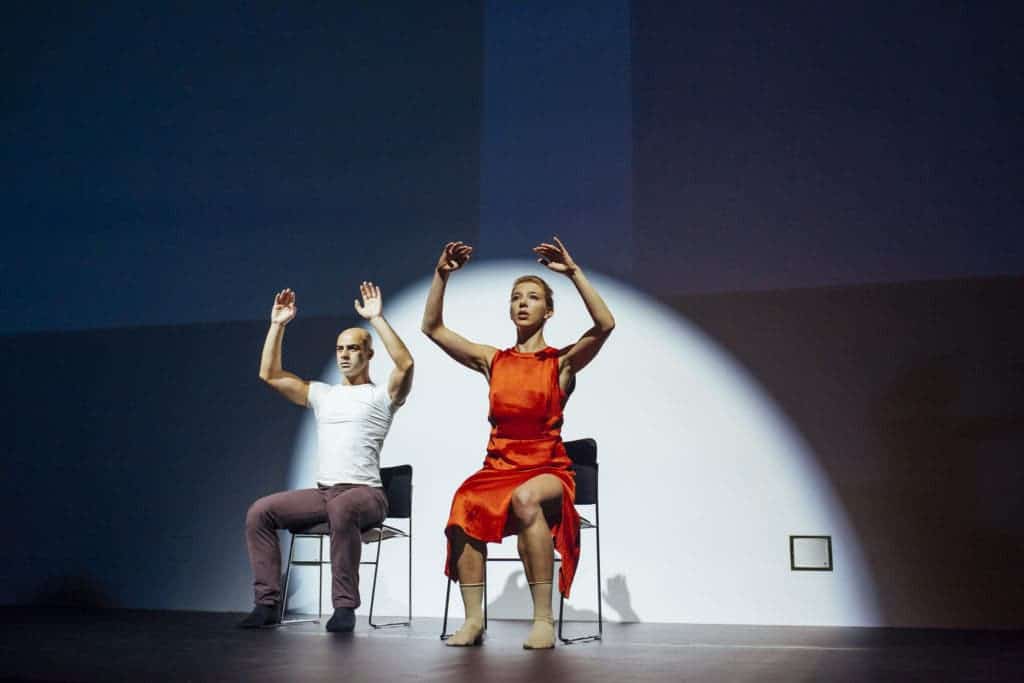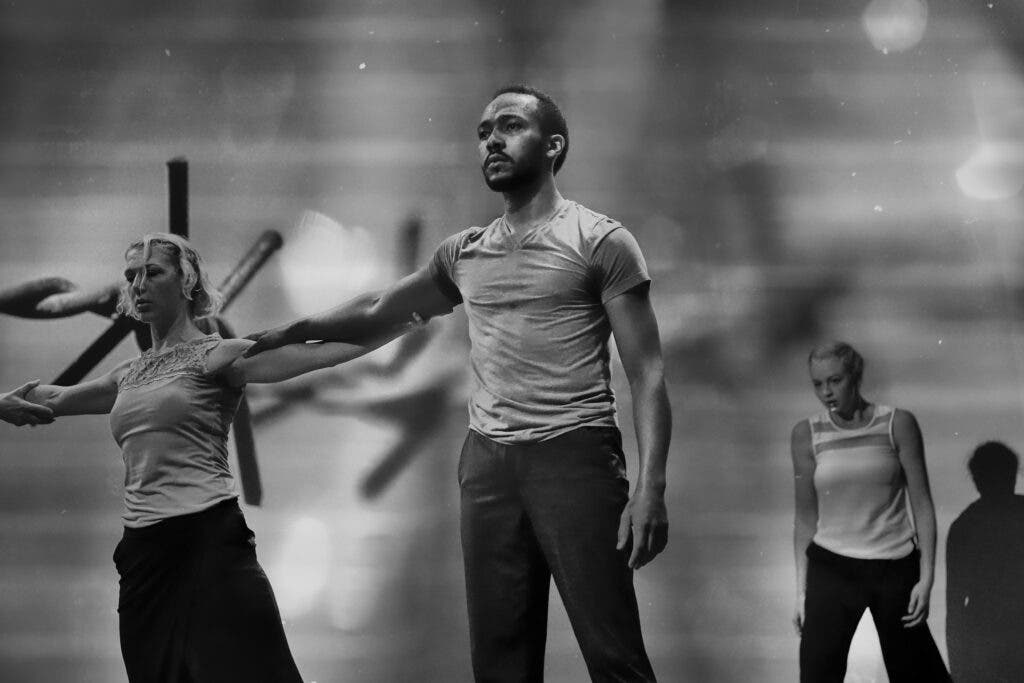
In an era when science and politics often collide, public confidence in science seems to be on the downswing. This hasn’t ever been made more obvious than today, as we’ve witnessed the dangers of polarization while the current pandemic sweeps the globe or the ambivalent response in the face of the more silent, but much more menacing, threat of climate change.
When reason fails, perhaps the heart can light the way. That’s what Gloria Benedikt — Project Leader of Science and Art at the International Institute for Applied Systems Analysis (IIASA) in Laxenburg, Austria, and a trained ballet dancer and choreographer — hopes to ultimately achieve through the synergy of art and science.
In a new IIASA report, Benedikt outlines a foundation for how such a collaboration can take place in order to tackle some of the world’s most pressing challenges.
“The idea of connecting science and art goes back to the enlightenment but was not realized for many reasons outlined in the report. Since the 18th century, we have entered a period of significant progress through specialization in all fields. The idea to connect science and art had a revival in recent decades because we are starting to see the limits in progress through specialization,” Benedikt told ZME Science.
“Science and technology have been a successful team in solving some problems. Think, for instance, about the so-called ozone hole. Scientists found out that the problem was certain chemicals. The solution was to get rid of them. Policymakers could ban them quite easily because technology was able to deliver an alternative solution to these chemicals. The solution to this problem was relatively easy as no significant behavior change was needed from the public to solve this problem.”
But sometimes things aren’t so straightforward. Not everything can be fixed with nuts and bolts. Complex societal problems often require nuanced solutions, and satisfying all stakeholders is virtually impossible. The fact of the matter is, hard facts are often not enough in order to propel massive action and shift paradigms of thinking.
“Climate change is far more complex. Scientists again found out what the problem is: CO2 emissions. But technology by itself cannot adequately reduce CO2 emissions. We also need behavior change from individual citizens. And for policy to be effective, we need the public on board.”
“This is why scientists need new partners to get the public on board and this is where artists come in to support the cultural shift we need. Climate change is at the core of a much larger transformation that is necessary and will require a paradigm shift in how we humans see our relationship with planet earth,” Benedikt said.

Since she joined IIASA in 2015, Benedikt has assembled a team of artists and researchers with whom she pursued various projects where music, dance, and theater joined hands with science. The goal was to cast a new light onto thorny topics such as biodiversity loss, climate change, or migration.
These projects were performed as plenary sessions at international events such as the World Science Forum, the International Conference on Sustainable Development, and the European Forum Alpbach, as well as in performance venues such as Carnegie Hall and Harvard University’s Farkas Hall.
You can catch a glimpse of these projects as they unfolded in Science & Art for Life’s Sake, an hour-long documentary embedded below.
How to organize a successful science-art communication project
Benedikt makes the case that her work should not be confused with activism. Instead, her projects are all about letting the science speak for itself, albeit in a different language than its conventional communication channels, such as papers published in scientific journals or keynote speeches.
In her report, the Austrian researcher has outlined four main principles that anyone can use to communicate science through art in a non-judgmental manner that lets people absorb concepts at their own pace.
“High-quality art, like high-quality science, does not tell people what to do. Instead, it uncovers complexities that are not apparent on the surface. To overcome the knowledge-to-action gap without going down the dogmatic route, we need to empower people by helping them understand what is happening so they can make well-informed choices,” she said.
“This is why we have developed four fundamental principles for artists and scientists who seek to engage with scientific findings that face the knowledge-to-action gap.”
“First, if artists engage with science, their responsibility is to stay true to the science and not express their own opinion.”
“Second, the artists’ challenge is to uncover the meaning of this finding, the ethical dilemma, so the public can understand why it matters. Ethics is not the domain of science, so here artists have an essential role to play.”
“Third, aim for a constructive outcome. It would be much easier to stage a drama, tragedy, or a happy end. But neither will be helpful. We need the creativity of artists here to envision what the world will look like if we walk the sustainable path. This empowers people and helps them understand what they can do, what their role is on this world stage. Then they can make better-informed choices.”
“Fourth, to understand the effect of these choices we have developed interactive components. In many of the productions, we have adapted simulation games. They initially were developed to help policymakers make better-informed decisions. Now we turned them into stage games to help audiences make better-informed decisions.”

Of course, crystalizing this process wasn’t easy nor without its challenges. As a journalist, I am very familiar with the reluctance of some scientists to communicate their work to the general public. Some fear that their findings may be misinterpreted or sensationalized to the point that they might feel ridiculed, others have a holier than thou attitude who see no point in distilling high-level abstractions to the level of a layperson. Benedikt had her own fair share of skepticism that she had to endure and overcome.
“First, I had to earn trust from the scientists that I would not wrench their work. When they saw the first few works I created, this changed. It also helped that I asked for paper and book recommendations before I showed up with an idea for a new work,” she said.
“Looking back, one of the most memorable moments behind the scenes was when I had the first meeting with a scientist for a new project where we would try to turn scientific papers into theater plays. After I had explained a little bit about my motivation for the project, he said: ‘You don’t have to convince me of this idea. Twenty years ago, when I started to work on this new branch of science called sustainability science, I already thought that we should be telling our findings in stories. But I’m a scientist, and I did not know anyone who could tell them as stories.’ It was a special moment that made me realize that two worlds – that were meant to – were finally coming together.”
Does it really work?

While Benedikt’s performances involve some degree of feedback, such as questionnaires after a show, which have all generally been positive, she underlines the fact behavior change cannot be isolated to one particular experience. By her own account, she is simply “one piece of the puzzle”, but that doesn’t mean there isn’t a process to her work.
“The performances are constructed based on elements whose effectiveness has already been confirmed by neuroscience and psychology,” said Benedikt.
“For instance, we use multimodal communication. We have text written by scientists or in collaboration with playrights spoken by a narrator or by actors, combined with music and dance. Neuroscientists have found that the more forms of communication are used, the more parts of the brain light up. And the more parts of the brain are active, the deeper and longer-lasting the experience. So this explains why a performance about science is more effective than a PowerPoint presentation conveying the facts. And by now there is plenty of evidence that stories are our natural mode of grasping complex content. “
“Every performance has an artistic opening before the scientific content comes in. This approach is in line with the first principle of moral psychology: emotions come first, strategic reasoning second.”
“Psychologists have also found that “subtle messages included in narratives” leave room for people to digest the information at their own rhythm as opposed to being directly confronted with it and are thus “less likely to create resistance.” Since findings from sustainability science tend to meet resistance on an ethical level, conveying messages through a medium that can create openness is important.”
“We use metaphors, symbols, and archetypes, which are storytelling and artistic devices that require the audience to participate in creating meaning actively. Audience members are invited to use their imagination to complete or unpack the poetic images offered to them. Instead of being passive recipients of information, they are active creators of meaning. Science tells us that information sticks when it is activity derived.”
“All of this helps to make scientific insights accessible and allows the public to derive meaning. But we still have not tackled the biggest challenge: overcoming the knowledge-to-action gap.”
Now, it’s your turn
The new report is meant for stakeholders in policy, science, and art. Benedikt hopes that her work will inspire others in these fields to step in order to accelerate our transition toward a sustainable future.
“In the science world, interest in the science-art interface has increased in the last years. But the conversation by enlarge is still quite confusing. There seems to be no clarity in terms of why and how we should pursue this. This confusion is not surprising as no concentrated effort has been made. By focused effort, I mean assigning someone to investigate this for half a decade as IIASA has done. I hope the report will now clarify why and how artists and scientists can work together effectively,” she said.
“In the art world, we see a different challenge. The artists are ready to engage, but the system, as mentioned above, is not providing them with adequate conditions. Artists will need some guidance as engaging effectively with science requires specific skills. I hope the report starts to fill that gap. Scaling up will also require a new place for artists and scientists to connect and facilitate collaborations.”






